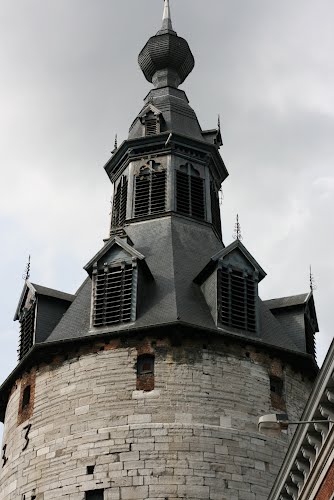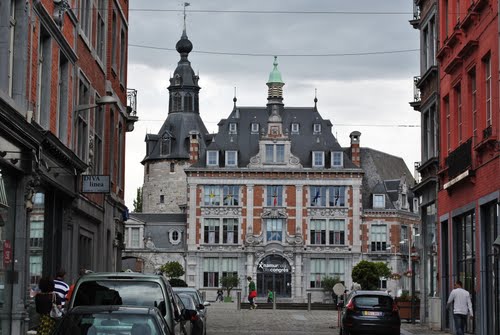The belfry of Namur, also called Tour Saint-Jacques (Saint-Jacob's Tower), is an historical building of the city of Namur, Belgium. The tower, constructed in 1388 as part of the city wall became a belfry in 1746. It is one of the 56 belfries of Belgium and France classified in the world patrimony of the UNESCO.
History
In the beginning, one of the clocks of the Saint-Pierre-au-Château church served as belfry for the citizens of Namur, which is to indicate the time and to announce events in the city.
After the destruction of the church, burned down during the siege of Namur in 1745, the Tour Saint-Jacques, the oldest of the three towers of the medieval city walls, became the city belfry. The Tour Saint-Jacques protected one of the city gates. Its "bancloque" (belfry clock) gave the signal for the opening and closure of the external city gates (from 1570 on).
At the beginning of the 18th century, the city wall was demolished but the Tour Saint-Jacques was preserved, restored and its clock was covered by an octagonal structure. This entire part was lifted upon a clock bulb. The Tour Saint-Jacques became Namur's city belfry in 1746.
Hence, the belfry of Namur is a military defence tower reallocated to civil use.












